
Ukiyo-e Prints浮世絵版画Port Townsend, Washington |
|
|
Ges thru Hic Index/Glossary |
|
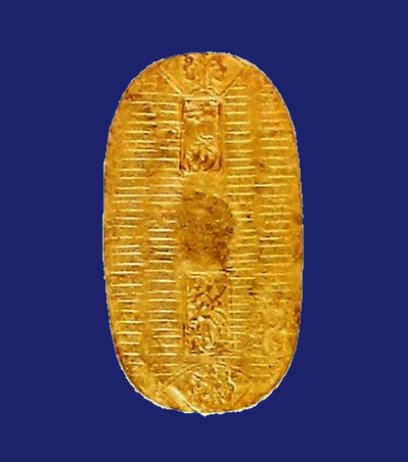
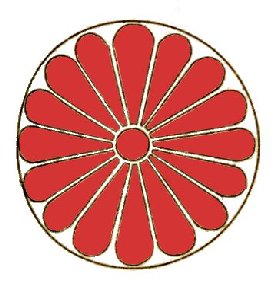
|
|
The gold koban coin on a blue ground is being used to mark additions made in June 2008. The red on white kiku mon was used in May 2008. |
|
|
|
TERMS FOUND ON THIS PAGE:
Gesaku, Geta, Giboshi, Gofun, Gokaidō, Goshoguruma, Gototei Kunisada, Gumbai, Gutenberg, Gyōyō, Habutae, Hachimaki, Hagatame, Hagoita, Hakama, Hako-makura, Hakuuchigami, Hama, Hamlet, Hana, Hanabishi, Hanabi, Hanagatsuo, Hanamachi, Hanami, Hanamichi, Hanetsuki, Hanji-e, Hanmoto, Hannya, Hanshita, Hara Budaya, Harimaze, Harimise, Hashira-e, Heian Period, Heishi, Hermann Hesse, Hi and Brian Hickman
戯作, 下駄, 擬宝珠, 胡粉, 五海道, 御所車, 五渡亭国貞, 軍配, 杏葉, 羽二重, 鉢巻, 歯固め, 羽子板, 袴, 箱枕, 箔打紙, 濱 or 浜, 花, 花菱, 花火, etc.
|
|
|
TERM/NAME |
KANJI/KANA |
DESCRIPTION/ DEFINITION/ CATEGORY Click on the yellow numbers to go to linked pages. |
|
Gesaku |
戯作 ぎさく |
"The generic term for all popular fiction written between the middle of the 18th century and the close of the Edo period (1600-1868), and for literature of the early part of the Meiji period (1868-1912) that continued this tradition. The term originally meant 'written for fun'..." Generally flippant, facetious, but written with an 'elaborate structure'.
Quoted from: Kodansha Encyclopedia of Japan, vol. 3, p. 28, entry by Wolfgang Schamoni. 1 |
|
Geta |
下駄
げた |
Wooden clogs usually made of paulownia or cryptomeria wood with oak or magnolia teeth, i.e., ha (歯 or は), supports. The term geta became popular during the Edo period although this type of footwear was being made as long ago as 300 B.C. During the Heian and Muromachi eras they were known by other names. The thong which holds the foot to the clog was generally made of cloth or leather.
Source: Kodansha Encyclopedia of Japan, vol. 3, p. 30, entry by Miyamoto Mizuo. |
|
"Geta for men are plain wood and usually have black thongs while those for women are both lacquered and plain, and have beautifully colored thongs of silk or velvet."
Quoted from: Dictionary of Japanese Culture by Setsuko Kojima and Gene A. Crane, p. 76.
Mock Joya refers to the thong or strap as a hanao (鼻緒 or はなお). Lacquer geta are referred to as nurigeta (塗り下駄 or ぬりげた). Tall geta are called mountain, yama, or travel, dochu, geta.
"As everything became luxurious in the Tokugawa days, geta also showed luxurious trends. During the Bunka-Bunsei era (1804-30) geta with little drawers to hold scent bags or tiny bells appeared. Such geta were used by fashionable women. Many women also discarded their geta after a few days, as they liked to always wear new geta."
This is what I call the Prada and Imelda effects.
Quote from: Mock Joya's Things Japanese, p. 14.
Mock Joya also notes three other customs associated with geta: 1) They are often given as gifts to people on their sick beds in hopes this will help them get up and walk away; 2) Don't ever give them to someone you love because they might just use them to walk away and find someone else; And 3) Put moxa under the geta of a guest who just doesn't get the hint that they have overstayed their welcome. Light the moxa and the guest will leave.
The image to the left is a detail from a print by Eizan showing an elegant woman walking through the snow. She is wearing high, black lacquer getas. |
||
|
|
||
|
Giboshi |
擬宝珠
ぎぼうし |
The jewel-like decoration found atop the newel post on a bridge, railing, platform or portable shrine. On the shrine it is called a souka (葱花 ). |
|
Gofun |
胡粉
ごふん
|
Literally "foreign powder": "...probably introduced from China. This white is made from ground calcined clam/oyster shells and can be mixed with colours using nikawa rather than nori to give opacity and thickness."
Quote from: Japanese Woodblock Printing, by Rebecca Salter, University of Hawai'i Press, 2001, p. 30
Nikawa is animal glue used as a binder. Nori is rice paste.
Unlike the rest of the printing technique the gofun is splattered onto the surface in a controlled manner. Generally it is found in snow scenes, but as you can see it is not strictly limited to that motif. Because it is splattered no two prints would be exactly the same. Nor would all examples of this print by Kuniyoshi necessarily have gofun applied after the traditional printing process is completed.
The images to the left are by Kuniyoshi. The top one shows a close up detail of the spume produced by the towering waves on the left.
The gofun illustrations were sent to us by our great contributor E. Thanks E! |
|
Gokaidō |
五海道 ごかいどう |
The five great roads established during the Edo period (1603-1868) to link the provinces to the shogunal center which is now called Tokyo. The five were the Tokaidō connecting Edo with Kyoto along a coastal road, the Nakasendō which traveled to Kyoto through the mountains, the Nikkōkaidō, the Kōshukaidō and the Ohshūkaidō. |
|
Goshoguruma |
御所車
ごしょぐるま |
An ox-drawn cart used by the early court nobility. The image to the left is a detail from a print by Hokusai.
According to Royall Tyler a 14th c. commentary relates the story that the Empress asked Lady Murasaki to write some new tales to amuse the court. "Having none to offer, the empress asked Murasaki Shikibu to write one. The lady therefore went on pilgrimage to Ishiyama-dera, a temple near the southern end of Lake Biwa, a day's journey by ox carriage east of Kyoto, in search of inspiration." This may have been the origin of The Tale of Genji.
Quoted from: "Harvard Magazine", May-June 2002, Vol. 104, No. 5, p. 32. |
|
Gototei Kunisada |
五渡亭国貞 ごとてい.くにさだ |
This is one of the early names used by Kunisada |
|
Gumbai (or gunbai) |
軍配 ぐんばい |
War paddle |
|
I have to admit to a bit of confusion on this one. In our entry on tōuchiwa we list it as a fan which has its origin in the T'ang Dynasty (618-907) from China. But it looks remarkably like the gumbai and what the difference is is unknown to me. Dorothea Buckingham in her The Essential Guide to Sumo (p. 70) is absolutely convinced of the distinction between the two. "The wooden fan held by the referee is not a fan at all, but a war paddle. Legend has it that Nobunaga [1534-82 - 信長 or のぶなが] ...was an avid sumo fan and designed the gunbai for the sumo referee. The gunbai was later used by the warring commanders as a battle signal." Turning the gumbai signaled the beginning of a battle. Buckingham notes that some experts believe it was a war paddle long before it was used in sumo.
The rank of the referee (gyōji: 行司 or ぎょうじ) is indicated by the color of the braided cord (himo: 紐 or ひも) hanging from the gumbai. The highest rank uses a purple cord and the next highest a purple and white one. Lower ranks use scarlet followed by scarlet and white, then green and white followed by green or black. "The gunbai of the senior gyoji are often trimmed in silver. Some are decorated with gold leaf designs or kanji characters; others are lacquered."
紐 or himo, which is the braided cord hanging from the gumbai, can also be read as gigolo or pimp. I have no idea why. This seems rather odd, don't you agree? If you know why this is please write and tell me. (No opinions please. Just the facts maam or sir as the case may be.) |
||
|
|
||
|
Gutenberg |
グーテンベルグ |
Inventor of the printing press 1 |
|
Gyōyō |
杏葉
ぎょうよう |
Apricot leaf - used as a family crest or mon.
"The puzzling 'tassel' design, written with ideographs that literally mean 'apricot leaf,' appears to be a pattern which originated in Southeast Asia and eventually came to Japan through T'ang China." This motif resembled the tassels attached to saddles and bridles. It is often confused with the zingiber motif.
Source: The Elements of Japanese Design: A Handbook of Family Crests, Heraldry and Symbolism, by John W. Dower, p. 126. |
|
Habutae |
羽二重
はぶたえ |
A type of silk that was worn by samurai. According to at least one web site there were government edicts which restricted its use at times only to this class of men. Peasants and women were forbidden to wear it.
The detail to the left shows a rōnin or masterless samurai wearing a habutae as a summer garment. Notice the crest or mon visible near the figures left shoulder blade. This fellow is taken from an early Kunisada print ca. 1816-17 portraying the actor Matsumoto Kōshirō V as Ono Sadakurō. |
|
Hachimaki |
鉢巻
はちまき |
A headband: A thin towel or strip of cloth tied around the head. Originally imbued with a religious significance today they are also worn by laborers. They date from as early as the 4th century.
"Hachimaki came to be worn in battle, apparently because they were believed to strengthen the spirit. They were also believed to repel evil spirits; for this reason boys wore hachimaki made of iris leaves on Boy's Day...and sick people or women giving birth often donned them."
Quoted from: Kodansha Encyclopedia of Japan, vol. 3, entry by Miyamoto Mizuo, p. 74.
The image to the left is a detail from a print by Shunshō.
Hachimaki can also be written as 鉢巻き. Literally this term means 'to tie around a bowl'. "Many Japanese wear one when they apply themselves to an arduous task, to gather strength, both spiritually and physically. It also serves to absorb sweat. They wear one when carrying a portable shrine (mikoshi) at festivals, when selling items at street fairs, when doing construction work, or when studying for entrance examinations. Schoolchildren often wear red or white ones at athletic meets (undōkai) to distinguish teams."
Source and quote from: Dictionary of Japanese Culture by Setsuko Kojima and Gene A. Crane, pp. 86-7. |
|
Hagatame |
歯固め
はがため |
Tooth hardening: "...the practice of chewing tough edibles - such as rice cakes, radishes, or certain varieties of meat and fish - during the New Year's season. Strong teeth, it was thought, ensured good health and longevity."
Quoted from: Quoted from: Jewels of Japanese Printmaking: Surimono of the Bunka-Bunsei Era 1804-30 by Joan Mirviss and John Carpenter - cat. entry #15, p. 62.
Quoted from: The Pillow Book of Sei Shonagon, translated and edited by Ivan Morris, Penguin Classics, 1979, footnote 124, p. 294.
The photo to the left is of yuzuriha leaves shown here courtesy of Shu Suehiro at http://www.botanic.jp/index.htm. |
|
Hagoita |
羽子板
はごいた |
A battledore used in the game of hanetsuki.
"As New Year's approaches, hagoita...are displayed in all their glory in shops. Particularly women, young and old, crave for these hagoita. These beautiful battledores are, however, not to be used for playing the game of hane... It is the plainer ones that are used for thsi purpose." The game goes back to the Muromachi period (1392-1573). The shuttlecock was composed of several feathers stuck in a soapberry nut and the battledore was generally carved from paulownia, cryptomeria or other light wood.
Originally the battledores were simple, but in time some were spruced up by elaborate paintings. These were the ones used by members of the Imperial court. "Later on, Edo citizens with wealth and culture added so many artistic touches and such elegance to them that they became unsuitable in actually playing the game.... As Kabuki dramas were popular, there appeared in Edo hagoita bearing the likenesses of famous actors in their great roles, made with oshie or gorgeous silk and brocade pieces pasted together to represent persons and their costumes."
Sources and quotes from: Mock Joya's Things Japanese (p. 470-1)
The image to the left is a detail from a print by Tamikuni showing the actor Sawamura Kunitaro II as an onnagata decorating a battledore.
|
|
Hakama |
袴 はかま |
Wide legged
trousers: Some sources describe it as a "man's formal divided skirt".
See also our entry on nagabakama. |
|
Hako-makura |
箱枕
はこまくら |
Box pillow: The evolution of the pillow must be a common trait among all groups. In ancient Japan it was said to be bundles of straw or wooden blocks. Large families were said to use a single log. The same was true for workers and apprentices. In the morning "...the father or employer would strike one end with a hammer to wake them up..." In time the hako-makura was invented and a small padded pillow was added to the top.
Eventually these box pillows became more elegant and delicate and were raised in height since the were set just beyond the futon. "This type of makura was used because the people, both male and female, dressed their hair elaborately in olden times and they did not wish to spoil the coiffure while sleeping. They rested their neck on the hako-makura wile their head would be free."
Quote from: Mock Joya's Things Japanese, p. 42. 1 |
|
Hakuuchigami |
箔打紙 はくうちがみ |
A special paper used in the preparation of gold and silver foil 1 |
|
Hama |
濱 or 浜
はま |
Censor whose seals were used in the 1840s & early 1850s. Full name Hama Yahei - 浜弥兵衛 or はまやへえ. 1 |
|
Hamlet |
ハムレット |
Tragic prince of Shakespearean play 1 |
|
Hana |
花 はな |
Japanese term for flower or a beautiful woman 1 |
|
Hanabishi |
花菱 はなびし |
A flower shaped family crest |
|
Hanabi |
花火
はなび
|
Fireworks
Thanks to our generous correspondent E. we are able to show you two very different images illustrating the Japanese enjoyment of fireworks. The top one is a detail from a print by Kuniyoshi of a public viewing whereby boatloads of spectators are out on the water oooing and aaahing - in Japanese, of course. The second image on the left is a detail from a book illustrations by Utamaro showing a boy lighting a 'pinwheel'. Look closely and you will notice the flame he is using to ignite the fuse. This is the more private experience. Close up and personal.
Thanks E!
|
|
Hanagatsuo |
花鰹 はながつお |
Dried bonito shavings |
|
Hanamachi |
花街 or 花町 はなまち |
Red-light district |
|
Hanami |
花見 はなみ |
Cherry blossom viewing (or the viewing of any other flower) |
|
Hanamichi |
花道 はなみち |
A raised walkway through an audience to a stage |
|
Hanetsuki |
羽根突き はねつき |
"...a game played by women at New Year's and is similar to the Western game of badminton. Hanetsuki is played without a net, however, and can be played alone."
Source: The Shogun Age Exhibition (cat. entry #268, p. 259) |
|
Hanji-e |
判じ絵
はんじえ |
A rebus: When I was small I remember playing with books filled with picture puzzles. Clearly they were created for my age group and skill level and were probably a very good learning tool. Even as I grew older the rebus continued to show up in everyday life. For example, "I (heart) New York" is known and understood by all. Or, nearly all. However, sometimes the rebus plays a more significant role - be it political or sinister or politically sinister. Timothy Clark notes in the Utamaro catalogue that "Although the use of picture-riddles in various series was certainly a playful pictorial device, it also started out as a necessary response to the edicts of 1793 forbidding the inclusion in prints of the names of women other than Yoshiwara courtesans. By another edict of the 8th month, 1796, these picture-riddles were forbidden [themselves]..."
Quote from: The Passionate Art of Kitagawa Utamaro, published by the British Museum Press, London, 1995, text volume, p. 167.
The image to the left is a detail from a print by Kuniyoshi created decades later. |
|
Hanmoto |
版元 はんもと |
Publisher |
|
Hannya |
般若
はんにゃ
|
A female demon most poignantly portrayed by a frightening mask worn in certain Noh dramas.
In an entry on hannya masks Mock Joya states: "As to the origin of this fierce female mask, it is traditionally said that there was once a very jealous woman, and in his attempt to cure her of evil, a Buddhist priest named Hannya-bo (般若坊 or はんにゃぼう) carved out such a mask to impress upon her how ugly she was at heart."
"The hannya mask also seems to have some connection with the hannya sutra of Buddhism [the kanji is the same]. In the Noh play named Aoi-no-ue, the vindictive ghost of a woman causes the suffering of many persons, and a priest prays for her salvation, chanting the hannya-kyo sutra, and then the evil spirit disappears."
Quotes from: Mock Joya's Things Japanese (p. 403)
The demonization of women as everyone knows is not limited to the Japanese. One woman's weakness causes the Fall. To be fair the man was weak too and deserve much of the credit. Pandora opens the box, Helen causes the war - although in both cases there were underlying circumstances well beyond their control. But still, even with the advancements women have made in the last century old bigotries die hard. Perhaps that is one of the reasons why an anagram for mother-in-law can be so bitingly witty: Woman Hitler.
A puzzling connection: As noted above the kanji for hannya has two diametrically opposed meanings. However, this is not completely inscrutable. Remember that the fierce and daunting image of Fudō Myōō which to the unaccustomed eye would seem evil is actually just the opposite. He saves souls where it would look likes he would be punishing them. There are other such examples within East Asian traditions and this should serve as an object lesson that appearances can most certainly be deceiving.
The top image to the left is a detail from a print by Hokusai while the one below that is isolated from a print by Yoshitoshi. |
|
Hanshita |
版下
はんした |
Line drawing laid down on the keyblock for carving. The example shown here is attributed to Hokusai. It is illustrated in an article in "Andon" by Richard Illing entitled "Hokusai drawings - from draft to finished print".
Properly speaking for this drawing to be a true hanshita it would have been destroyed in the publishing process. But since it wasn't it gives us a superb example of what a hanshita would have looked like. |
|
Hara Budaya |
|
18th c. Samurai diarist 1 |
|
Harimaze |
張交図 はりまぜ |
A composite print with several separate images in various motifs. Often this type of print was cut by the owner into its component parts. 1 |
|
Harimise |
張り見世 はりみせ |
The lattice work of a brothels "display window."
(See also magaki.) |
|
Hashira-e |
柱絵 はしらえ |
Pillar print: Roger Keyes stated in the catalogue of prints at Oberlin College that: "They were sold in paper mounts as hand-scrolls and were hung on the narrow support posts on the walls of rooms in houses." Later he added that: "Jacob Pins has pointed out that the early pillar prints were printed on a single sheet of paper, but that from the 1790s on they were printed on two sheets joined around the middle. The vogue for pillar prints diminished in the early nineteenth century."
Quote from: Japanese Woodblock Prints: A Catalogue of the Mary A. Ainsworth Collection, Roger Keyes, Allen Memorial Art Museum, Oberlin College, 1984, p. 100.
In the introduction to Pins catalogue Keyes wrote: "This is the first book in any language devoted to those miracles of grace and ingenuity, the hashira-e... The pillar print is an improbable shape, half a person's height, yet narrower than the palm of a hand."
Keyes points out the Japanese had a "...tradition of hanging long decorated strips of wood, bamboo, textile, ceramic, or paper on the hashira of buildings.... So it was natural and even inevitable that woodblock prints would eventually be designed and used as pillar coverings." Keyes goes on to tell us that Pins "...shows, the first long narrow prints appeared by accident."
Source and quotes from: The Japanese Pillar Print: Hashira-e, by Jacob Pins, Robert G. Sawers Publishing, 1982, p. 9.
To see a larger version of the print to the left click on the image. |
|
Heian Period |
平安時代 へいあんじだい |
One of the greatest ages of cultural flowering in Japan (794-1185). Named after the newly constructed city of Heiankyō which is now known as Kyōto. Literally "Capital of Peace and Ease." Seat of the imperial court. "...the Heian period has long been an established division of history, seen by the Japanese as the apogee of the nation's aristocratic age, when some of its finest literary works were produced and one of the world's most exquisitely refined cultural styles flourished."
It was during this period that what had been the slavish adoption of Chinese influences were assimilated and became much more truly Japanese. The reason for the original move to Heiankyō is unclear, but it may have had something to do with the court's wish to get away from the Buddhist influences on the civil service. A second reason may have been due to a struggle for power between various aristocratic factions. Superstition also played a role: The living were eager to move away from the vengeful spirits of deceased nobles.
What followed the Heian period were the feudal states of the Kamakura period - from a centralized power run by a civil aristocracy to one of dispersed militarized states.
Source and quotes from: Kodansha Encyclopedia of Japan, vol. 3, p. 165, entry by G. Cameron Hurst III. |
|
Heishi |
瓶子 へいし
|
Saké bottle motif: Dower in his The Elements of Japanese Design says next to nothing about this item used as a family crest. It would be hard to imagine that anyone other than a brew master would want to wear such an image. However, wrapped saké bottles were often presented as gifts to the gods and therefore would have an auspicious aura connected to them.
|
|
Hesse, Hermann |
ヘルマン ヘッセ |
Author (1877-1962) who won the Nobel prize for literature in 1946 1 |
|
Hi |
日
ひ |
Sun motif crest or mon: "The circular red 'rising sun' first appeared as a popular decorative pattern on fans in the early Heian period. It was not adopted as a national emblem until 1854..." and wasn't put on the flag until 1870.
Source and quote from: The Elements of Japanese Design, by John W. Dower, p. 44. |
|
Hickman, Brian |
|
Author of the washi article for the Kodansha Encyclopedia of Japan 1 |
|
|
 |
A thru Ankō |
 |
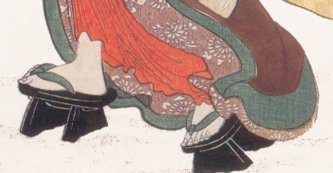
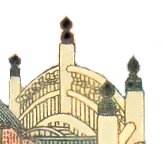
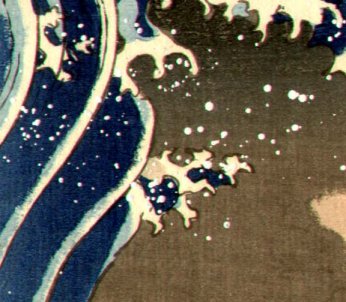
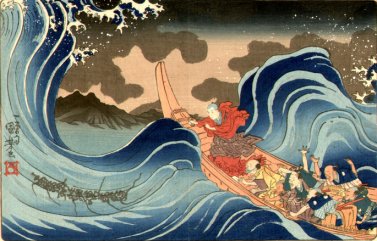
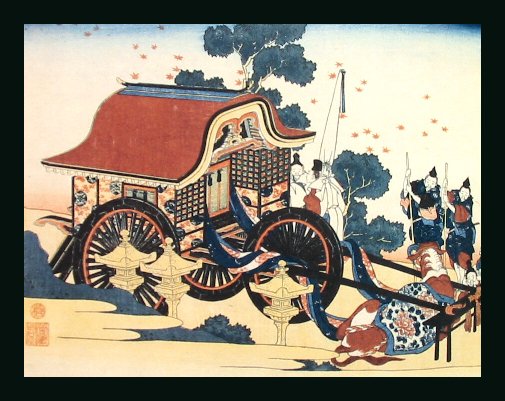
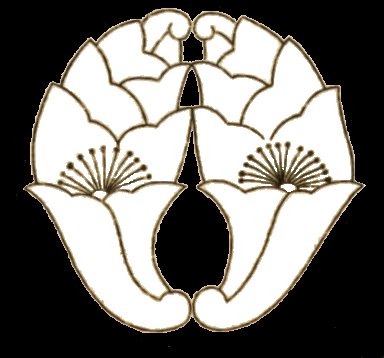
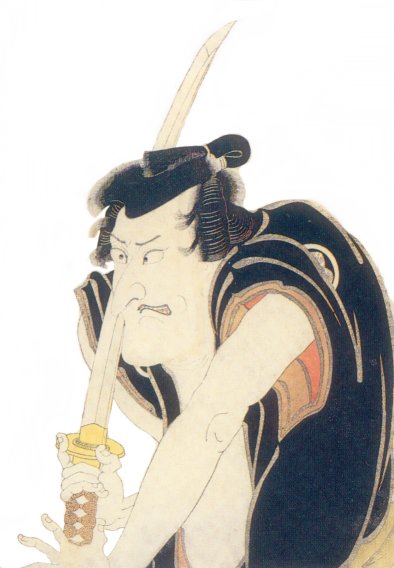
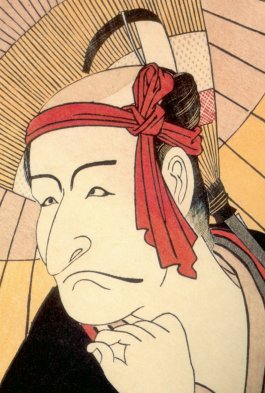
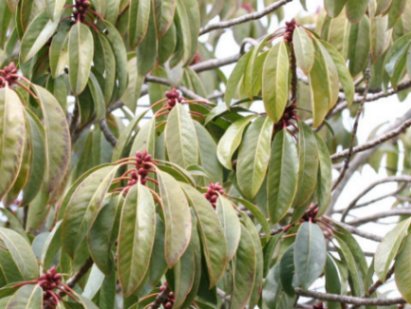
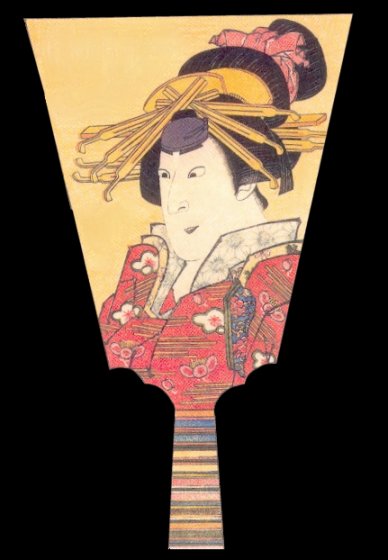
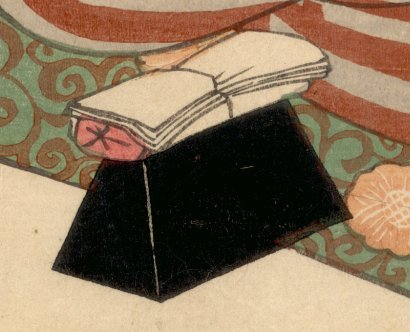

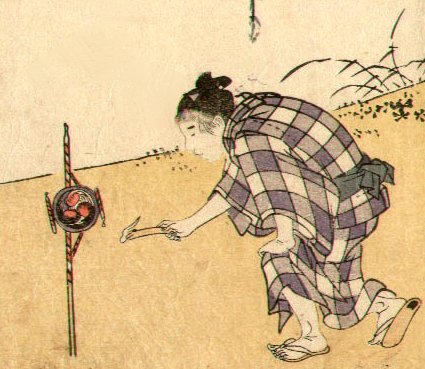
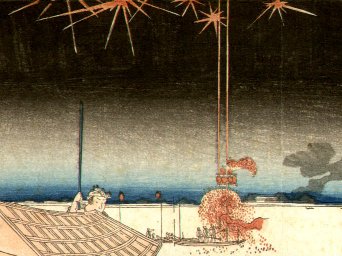
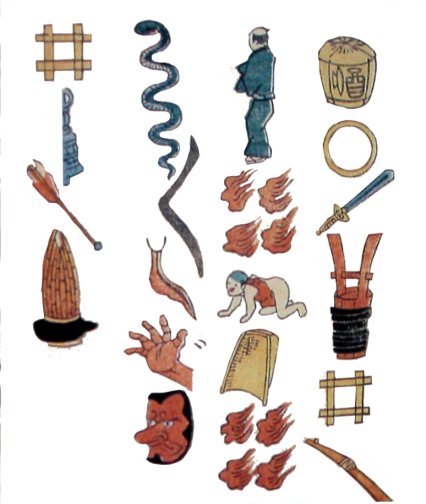
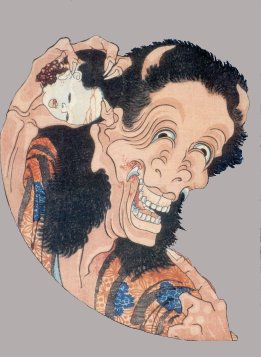
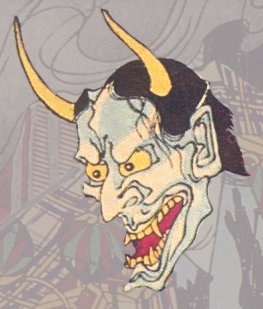
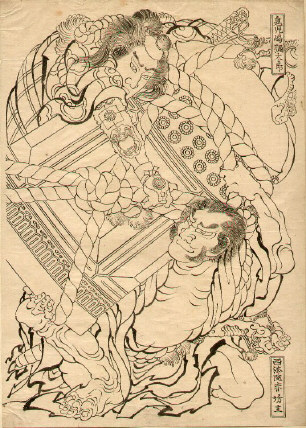
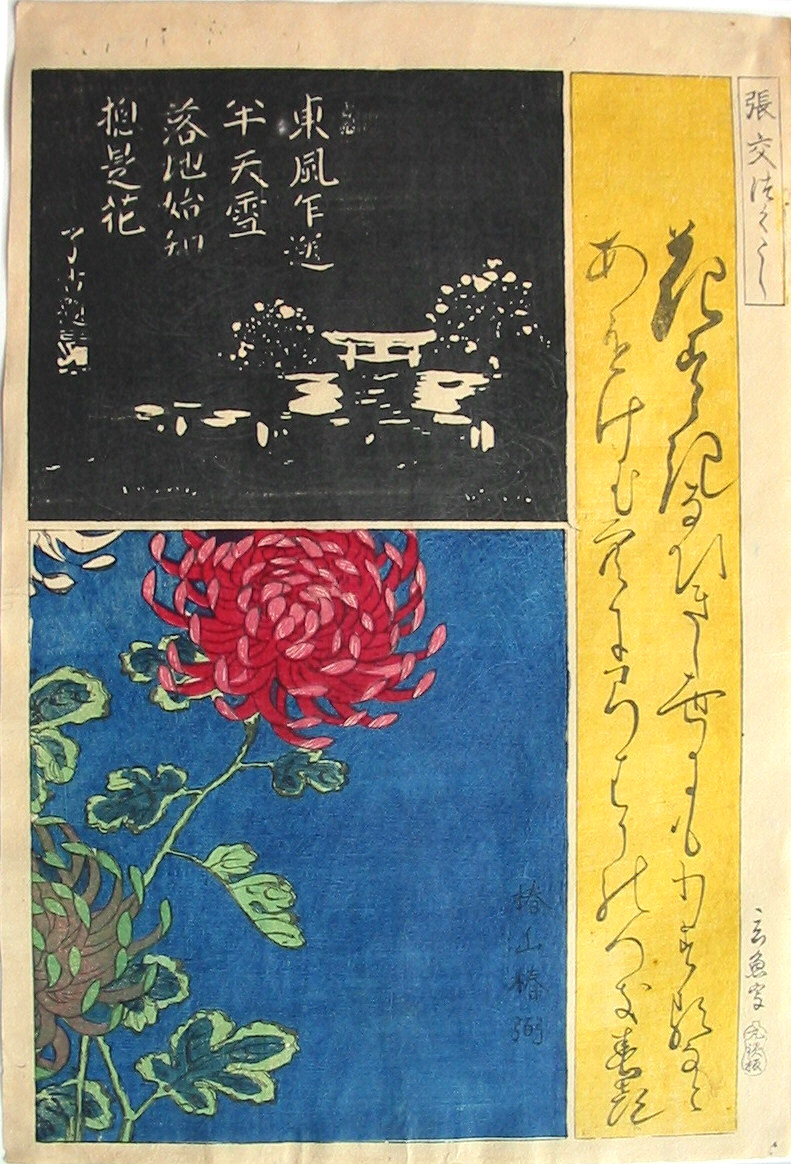

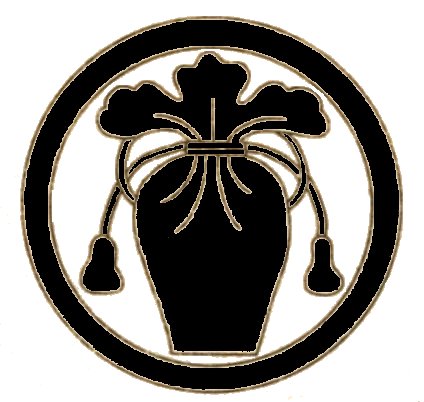
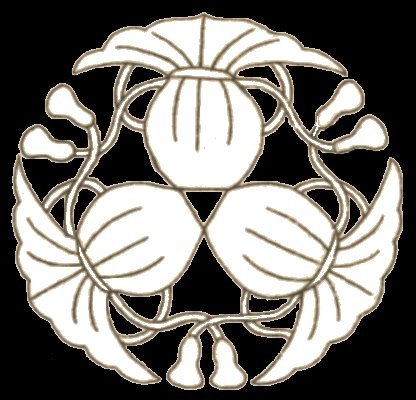

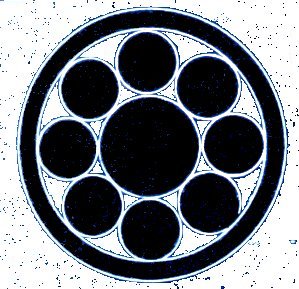
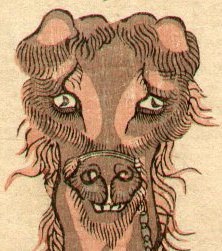
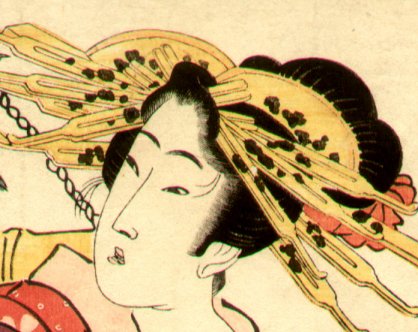


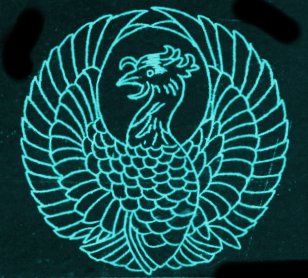
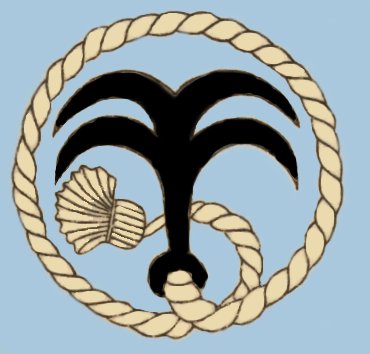
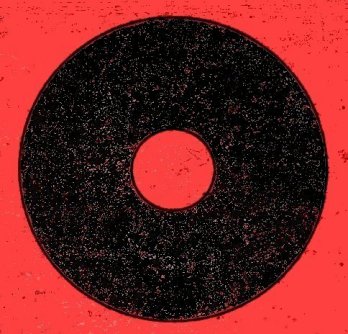
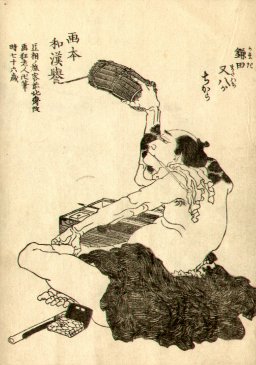
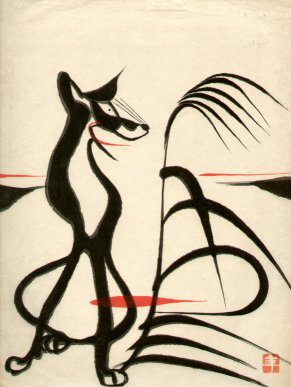
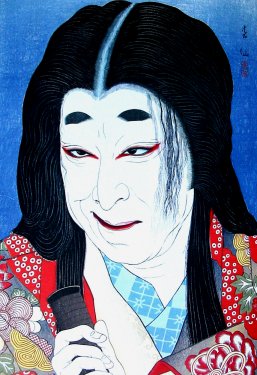
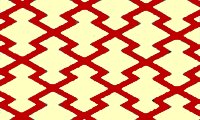
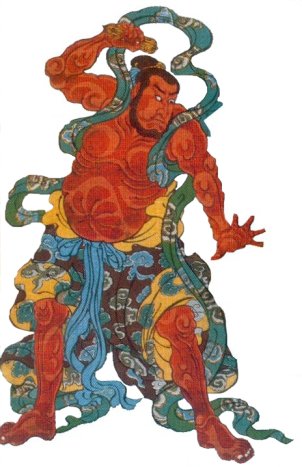
3.jpg)
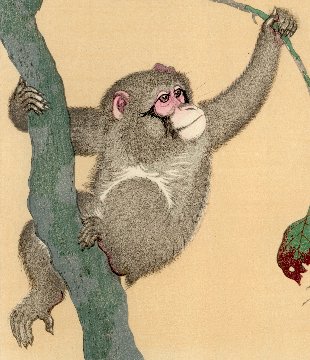
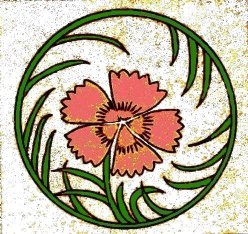
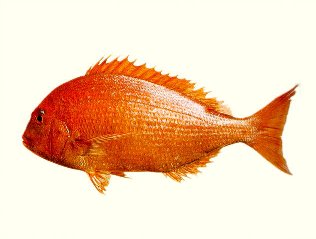
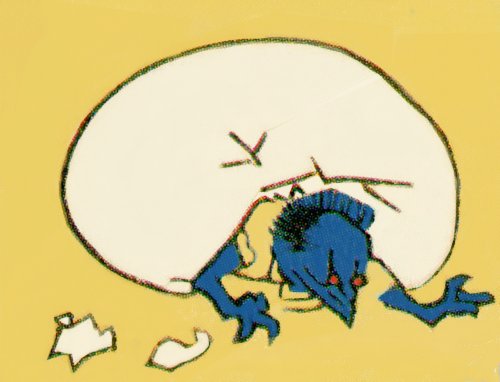
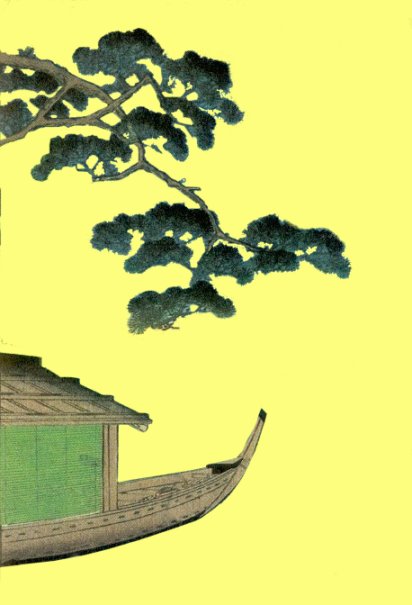
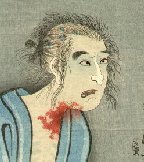
 HOME
HOME